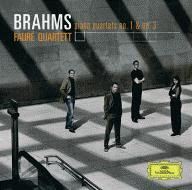New Work: "Where the Word Ends" by composer Gunther Schuller
 The Boston Symphony Orchestra performed Gunther Schuller's “Where the Word Ends,” a 125th-anniversary commission from the orchestra, in its world premiere last week in Boston and its New York premiere at Carnegie Hall on Monday (Feb 9), conducted by the orchestra’s music director, James Levine. The work is scored for a vast orchestra, and musicians were crammed onto the Carnegie stage.
The Boston Symphony Orchestra performed Gunther Schuller's “Where the Word Ends,” a 125th-anniversary commission from the orchestra, in its world premiere last week in Boston and its New York premiere at Carnegie Hall on Monday (Feb 9), conducted by the orchestra’s music director, James Levine. The work is scored for a vast orchestra, and musicians were crammed onto the Carnegie stage.
The review of the performance by Vivien Schweitzer of the New York Times said:
“Where the Word Ends,” a 25-minute work divided in four sections played without pause, opens with a gentle shimmering trill in the strings before rapid figurations are played over bold statements from the lower strings and brass. The colorful, theatrical score builds in intensity to a riotous conclusion before an introspective Adagio with lush string melodies. The lower strings provided a steady ostinato pattern in the Scherzo, over which a flurry of dialogue ensued among brass and percussion and other instruments. The hints of jazz reflect Mr. Schuller’s significant experience as a jazz performer and composer. (He coined the term “Third Stream” to represent music blending jazz and classical music.)
Gunther Schuller The composer Gunther Schuller is, famously, a man of many musical pursuits. He began his professional life as a horn player in both the jazz and classical worlds, working as readily with Miles Davis and Gil Evans as with Toscanini; he was principal horn of the Cincinnati Symphony from age sixteen and later of the Metropolitan Opera Orchestra until 1959.
Gunther Schuller's orchestral works include some of the classics of the modern repertoire written for the major orchestras of the world. Prominent among these are several masterful examples in the "Concerto for Orchestra" genre, though not all of them take that title. An early example is Spectra (1958), commissioned by the New York Philharmonic for the orchestra's departing music director Dimitri Mitropoulos. Schuller reconfigured musical space by organizing the ensemble onstage into smaller chamber groups within the larger orchestra, and also concentrated on instrumental timbre as a defining aspect of the piece's form and expression; both of these aspects were cutting-edge for the time, foreshadowing concerns of later composers. Other works include the Concerto for Orchestra No. 1: Gala Music (1966), written for the Chicago Symphony Orchestra; Concerto for Orchestra No. 2 (1976) for the National Symphony Orchestra; and Farbenspiel (Concerto for Orchestra No. 3) (1985), written for the Berlin Philharmonic. The title of the latter, translatable as "play of colors," echoes the visual metaphor of Spectra.
Not to be overlooked are Schuller's original jazz compositions such as Teardrop and Jumpin' in the Future, works that epitomize the composer's Third Stream approach combining the total-chromatic language of Schoenberg and the structural sophistication of the contemporary classical composer with the ensemble fluidity and swing of jazz. Schuller's realizations and orchestrations of music by composers from Tallis and Monteverdi to John Knowles Paine and Charles Ives coexist with his concert ensemble arrangements of classic jazz, standards, and ragtime music by Jelly Roll Morton, Dizzy Gillespie, Duke Ellington, and many others.

Comments